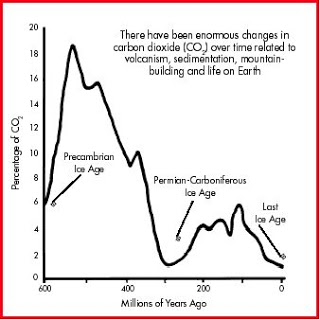
One thing revealed by the recent US Senate hearing was the importance of the two basic arguments forming the alarmist position:
1. “Ninety-seven percent of scientists agree: climate change is real, man-made and dangerous.” (Obama tweet)
2. “There are multiple lines of evidence that show the climate system is changing.” (Dept. of the Environment, Australia)
These two zingers must be met by equally brief, pointed replies.
97% Agreement
I concede that most climate scientists think there is a problem, but 97% of all scientists is an exaggeration.
The first claim of 97% came from a survey sample of 77 climate scientists who said “Yes” to 2 statements: “It has warmed since 1850.”; “Human activity has contributed to the warming.” That survey questionnaire was deliberately not sent to those known to be skeptical: scientists not employed by government or universities; astronomers; solar scientists; physicists; meteorologists.

More inclusive surveys with more pointed questions show much more diverse opinions. Most scientists agree it has warmed since 1850, the end of the Little Ice Age. Geologists have evidence that the earth was warmer than now during the Medieval Warm Period, more warm during the Roman Warm Period, warmer still in the Minoan period. So the overall trend is a cooling over the last 11,500 years.
Most agree that human land use, such as making dams, farming, building cities, airports and highways, all affect the climate in those locations. The idea that rising CO2 is causing dangerous warming is controversial, with dissenters a large minority.
Multiple Lines of Evidence Climate is Changing

All of the measures are “glass half-empty, glass half-full.” And no one has evidence separating human and natural climate changes. (Quotes below from Australia Dept. of Environment here)
Example 1: Air Temperatures
Air temperatures have increased globally, by around 0.85 degrees Celsius since 1880, with most of the warming occurring since the 1970s. All three major global surface temperature records show that the Earth’s atmosphere has warmed since 1880.
This is true and unsurprising emerging from the Little Ice Age. Over the last 150 years there has been a steady increase overlaid with a sine wave of 30-year warming and cooling periods. From 1979 to 1998 the warming coincided with the rising rate of CO2, but the correlation is not seen in the periods before and since those two decades.
Example 2: Sea Levels
Global sea levels have risen at an average rate of 1.8 millimetres per year over 1961 to 2003. This rate risen to around 3.2 millimetres per year from 1993 to 2012.
Sea levels have been rising with the Little Ice Age recovery, and tidal guages show no increase in the rate in recent years. The 3.2 mm comes from the GRACE satellite system which is still being calibrated and not yet reliable, according to researchers.
Example 3: Extreme Weather
Extreme weather events include heatwaves, bushfires, tropical cyclones, cold snaps, extreme rainfall and droughts. There is increasing evidence that the frequency and intensity of many extreme weather events are changing.
The number and strength of extreme weather events by any statistical measure have been unusually benign in recent decades. The IPCC concluded that no causal link is proven between warming and extreme weather
Example 4: Rainfall Patterns
Rainfall patterns are changing around the world. Research shows the global water cycle is intensifying with a warming climate, which means wet areas are likely to get wetter and dry regions are likely to be drier in response to climate change.
Global rainfall varies about 5% from one year to another, so if it is drier in one place, it is wetter somewhere else. The IPCC working group said there is currently no way of predicting which places will get more or less rainfall long term.
The other notions of ocean acidification, Arctic Ice melting, etc. are likewise inconclusive and subject to interpretation, as other posts here and elsewhere point out.
Conclusion:
We simply do not know our climate system well enough to predict what will happen. Our ignorance should not be an excuse for fear and irrational actions.
Future periods are likely to be colder as well as warmer, and cold is the greater threat to human life and prosperity. To prepare for the future we should invest in robust infrastructure and ensuring reliable affordable energy. We should also focus on real and present environmental problems such as actual air pollution which kills thousands of people every day.




































